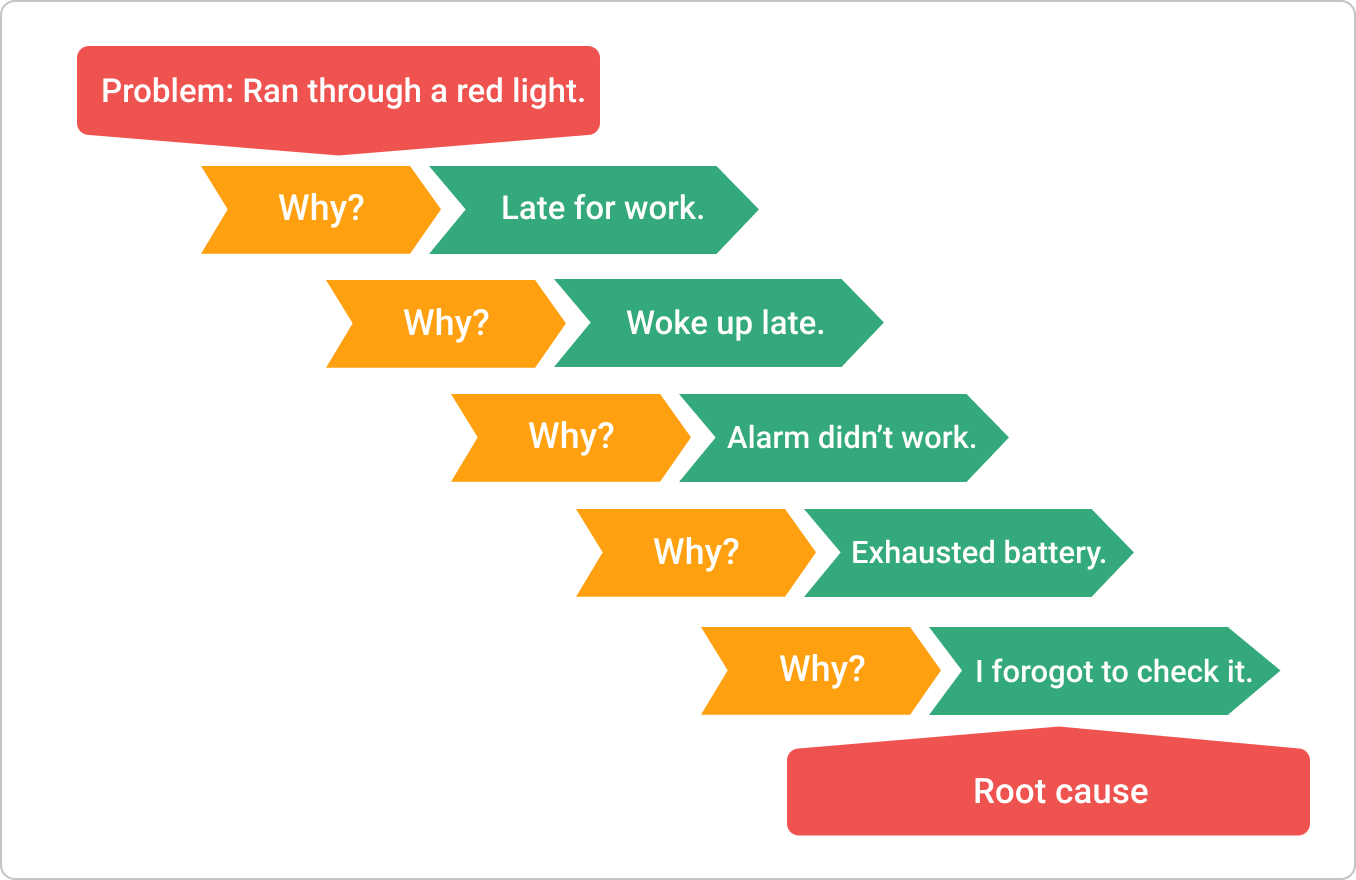The 5 Whys technique is a simple and effective tool for solving problems. Its primary goal is to find the exact reason that causes a given problem by asking a sequence of "Why" questions.
Step by Step
- Form a team.
- Try to assemble a team of people from different departments. Each representative has to be familiar with the process that is going to be investigated.
- Be aware that this is not an individual task, and it needs to be executed by the team.
- Define the problem.
- Discuss the problem with the team and make a clear problem statement.
- It will help you define the scope of the issue you are going to investigate.
- Ask Why.
- Empower one person to facilitate the whole process. This team leader will ask questions and try to keep the team focused.
- The answers should be based on facts and real data, rather than on emotional opinions.
- The facilitator should ask "Why" as many times as needed until the team can identify the root cause of the initial problem.
- Take Action.
- After the team detects the root cause(s), it is time to take corrective actions. All members should be involved in a discussion to find and apply the best solution that will protect your process from recurring problems.
- When the decision is made, one of the team members should be responsible for applying the right actions and observing the whole process.
- After a certain period of time, the team needs to meet again and check if their actions actually had a positive impact. If not, the process should be repeated.
- In the end, the case should be documented and sent across the organization.
Hints
- Don’t ask too many Whys. If you keep going, you may end up receiving tons of unreasonable suggestions and complaints, which is not the purpose. Focus on finding the root cause.
- Sometimes there could be more than one root cause.
- In these cases, the 5 Whys analysis will look more like a matrix with different branches.
- This may even help you detect and eliminate organizational issues that have permanent negative effects on overall performance.
Covered Scenarios
- Root cause analysis.

0 Comments:
Post a Comment